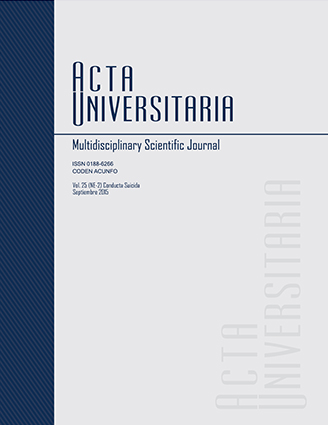Disordered eating behavior, depressive symptoms and psychosocial correlates among first year college students
Published 2015-09-10
Keywords
- Conductas alimentarias de riesgo,
- estudiantes,
- jóvenes,
- relaciones familiares,
- síntomas depresivos.
- Disordered eating behaviors,
- students,
- family relation ships,
- youth,
- depressive symptoms.
How to Cite
Abstract
The main purpose of this study was to determine the prevalence of disordered eating behaviors (DEB) and depressive symptoms, as well as its relationship with self-esteem, body thin ideal internalization, and relationship with father and mother. The sample (N = 892: 501 women y 390 men), between 16 and 41 years old (X = 19.7; DE = 2.9), was obtained from a census carried out to first year college students in a public university in Mexico City. The results showed a prevalence of DEB in the moderate level of 15.1% among men and of 19.5% among women, and of 4.1% and 6.1% for high risk DEB’s, respectively. Among women, sub threshold depression and high risk of a major depressive episode was found on the whole in 6.7% of the sample. Among men, the frequency was 3.3%. It was found that those subjects with some degree of depression and body shape or weight preoccupation have more risk for DEB.

